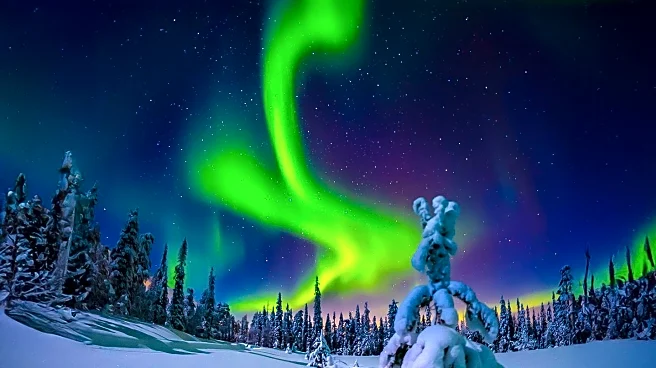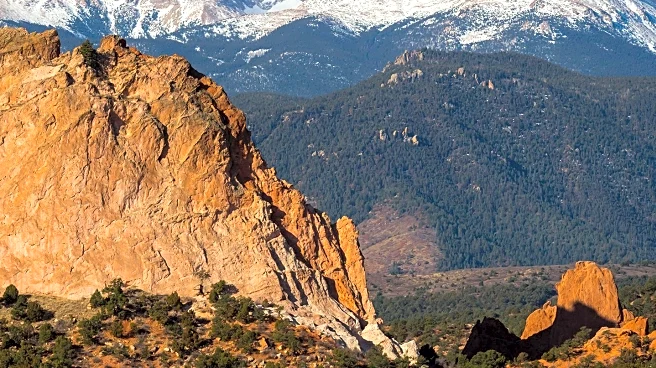What's Happening?
Residents across Colorado have been witnessing and photographing the aurora borealis, commonly known as the northern lights. This natural phenomenon, typically difficult to see with the naked eye, has
been visible across the state, including areas like Denver, Boulder County, and as far south as Colorado Springs and Pagosa Springs. The best viewing times were noted to be between 8 to 11 p.m. on Tuesday night. CBS News Colorado has shared tips for capturing the northern lights, recommending the use of tripods and specific camera settings to avoid blurry images. The event has sparked excitement among locals, with many sharing their photographs with CBS News Colorado.
Why It's Important?
The visibility of the northern lights in Colorado is a rare occurrence, usually requiring travel to remote areas or higher latitudes. This event has provided an opportunity for residents to engage with a natural spectacle that is often inaccessible. The widespread interest and participation in photographing the aurora borealis highlight the community's enthusiasm for natural phenomena and the role of media in facilitating public engagement. Additionally, the event underscores the importance of environmental awareness and appreciation for natural beauty, potentially fostering a greater interest in astronomy and environmental sciences among the public.
What's Next?
As the northern lights continue to be visible, residents may continue to capture and share their experiences, contributing to a growing collection of local photographs. This could lead to increased interest in local astronomy clubs and educational programs focused on natural phenomena. Media outlets may continue to provide coverage and tips for viewing and photographing such events, enhancing public engagement and awareness. The event may also prompt discussions on environmental conditions that allow for such visibility, potentially influencing local educational initiatives.
Beyond the Headlines
The occurrence of the northern lights in Colorado may have deeper implications for understanding atmospheric conditions and climate patterns. It could lead to increased interest in scientific research related to geomagnetic activity and its effects on the environment. Additionally, the event may inspire cultural and artistic expressions, as the beauty of the aurora borealis often influences creative works. This could foster a broader appreciation for the intersection of science and art, encouraging interdisciplinary collaborations.












